A plate and frame filter press is a type of industrial equipment used for solid-liquid separation. It creates a pressure-driven filtration process by using a series of filter plates and frames.
Working principle of plate and frame filter press
First, a number of filter chambers are formed by fixing the filter cloth between the filter plate and the filter frame. The suspension to be treated is pumped into these chambers from the inlet. By means of a hydraulic system or a mechanical device, the filter plate and the filter frame are tightly pressed together to form a sealed filter chamber. The suspension enters the chambers under the action of the pump, the liquid is filtered through the filter cloth, and the solid particles are retained on the filter cloth to form a filter cake.
As the filtration process proceeds, the cake gradually forms and thickens on the filter cloth. If necessary, the filter cake can be compressed by further pressurization to reduce its water content and increase the dryness of the filter cake. The filtered liquid flows out through the discharge channel on the filter plate and is centrally discharged to the outlet.
After the filtration is completed, the pressure between the filter plate and the filter frame is released and the filter press is opened. Separate the filter plate and frame by mechanical or manual means, and take out the filter cake. Finally, clean the filter cloth and filter plate to prepare for the next filtration. Through these steps, the plate and frame filter press realizes an efficient solid-liquid separation process.
Why do you need a plate frame and what does it do?
The role of the plate and frame in a filter press is to provide a fixed structure and support for the filter cloth and filter media (usually filter cake). They form the filter chamber where the plates and frames are tightly pressed together by a hydraulic system or mechanical device to form a sealed filter space. This structure allows liquids to pass through the filter cloth, while solid particles are trapped on the cloth to form the filter cake. Therefore, the plate and frame play a key role in the filter press in supporting the filter media, forming the filter space and ensuring the sealing.
What are the plate and frame filter press requirements for plate and frame?
Material requirements
- Corrosion resistance: Filter plates and frames must be able to resist the chemicals in the material being processed and avoid corrosion. Commonly used materials include polypropylene (PP), stainless steel, and cast iron.
- Strength and pressure resistance: Plates and frames need to be able to withstand high pressure to ensure that they do not deform during pressing and filtration. The material should have sufficient mechanical strength.
- High temperature resistance: When handling high temperature materials, the plate and frame should be able to withstand high temperatures without deformation or degradation.
Structural design
- Surface design of filter plate: The surface of filter plate should have a good design of liquid discharge groove to ensure that the filtrate can be smoothly discharged, and at the same time, enhance the peeling property of the filter cake.
- Opening design of the filter frame: The opening design of the filter frame should ensure that the liquid can flow freely and be evenly distributed on the whole surface of the filter cloth to avoid localized high pressure.
- Sealing: The sealing between the filter plate and the filter frame should be good to prevent liquid leakage under high pressure. Rubber seals or other sealing materials are usually used.
Filter cloth fit
- Filter cloth selection: The selection of filter cloth should be determined according to the characteristics of the material to be processed, and the aperture of the filter cloth should be suitable for the required filtration precision.
- Fixing of filter cloth: The filter cloth should be firmly fixed on the filter plate to avoid displacement or breakage during the filtration process. Common fixing methods include clamping and sewing.
Size and specification
- Standardized dimensions: The filter plate and frame should conform to standardized dimensions to facilitate replacement and maintenance. Common filter plate sizes include 800x800mm, 1000x1000mm, 1200x1200mm, etc.
- Thickness and weight: The thickness of the filter plate and frame should be sufficient to provide the necessary strength and rigidity, but the weight should not be excessive to facilitate operation and replacement.
Manufacturing process
- Precision and consistency: Filter plates and frames should be manufactured with high precision and consistency to ensure overall sealing and mechanical properties after assembly.
- Surface treatment: The surface of the filter plate and frame should be smooth and burr-free to minimize wear and tear on the filter cloth and prolong service life. For metal materials, anti-corrosion treatment, such as galvanization or spraying, is available.
What applications is the plate and frame filter press suitable for?
- Municipal wastewater treatment: Used to remove suspended solids and organic matter from wastewater.
- Industrial wastewater treatment: In the chemical, pharmaceutical, textile and food processing industries, it is used to treat wastewater generated during the production process.
- Chemical product separation: Used to filter mixtures after chemical reactions and separate solid products or by-products.
- Catalyst recovery: Recovery and reuse of catalysts used in the production process.
- Beverage production: e.g. clarification of wines, beers and juices, removal of solid impurities generated during the production process.
- Food processing: For the separation and purification of liquid foodstuffs, e.g. syrups, soy sauce, etc.
- Pharmaceutical production: Used to separate solid-liquid mixtures in the production of pharmaceuticals to ensure the purity and quality of pharmaceuticals.
- Biological products: Used to separate and purify biological products in the biotechnology and pharmaceutical industries.
- Mineral processing: For separating minerals from slurries and recovering valuable mineral particles.
- Metallurgical industry: Separation of metal particles and slag from smelting processes.
- Oil sludge treatment: Treatment of drilling mud and oilfield wastewater, separation of solid wastes.
- Oil refining process: Used in the oil refining process to separate and purify petroleum products.
- Pulp production: For solid-liquid separation in pulp production, removing impurities from cellulose pulp.
- Waste paper recycling: In the waste paper recycling process, used to separate and treat solid particles in wastewater.
- Sludge dewatering: In wastewater treatment plants, used for sludge dewatering treatment to reduce sludge volume and treatment costs.
- Solid waste treatment: Used to treat all kinds of industrial solid waste and hazardous waste to reduce environmental pollution.
What are the types of plate and frame filter presses?
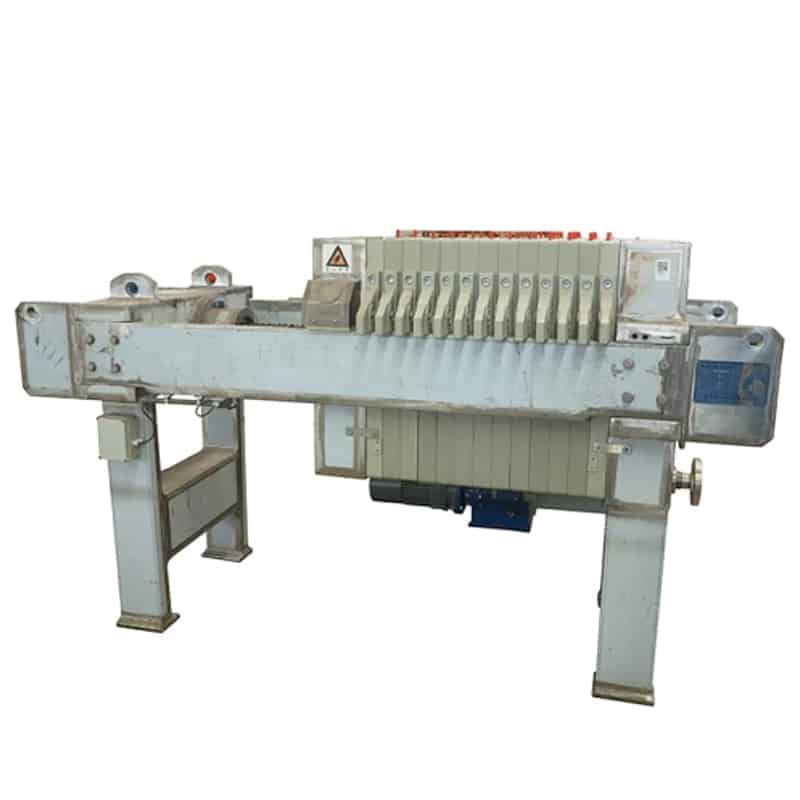
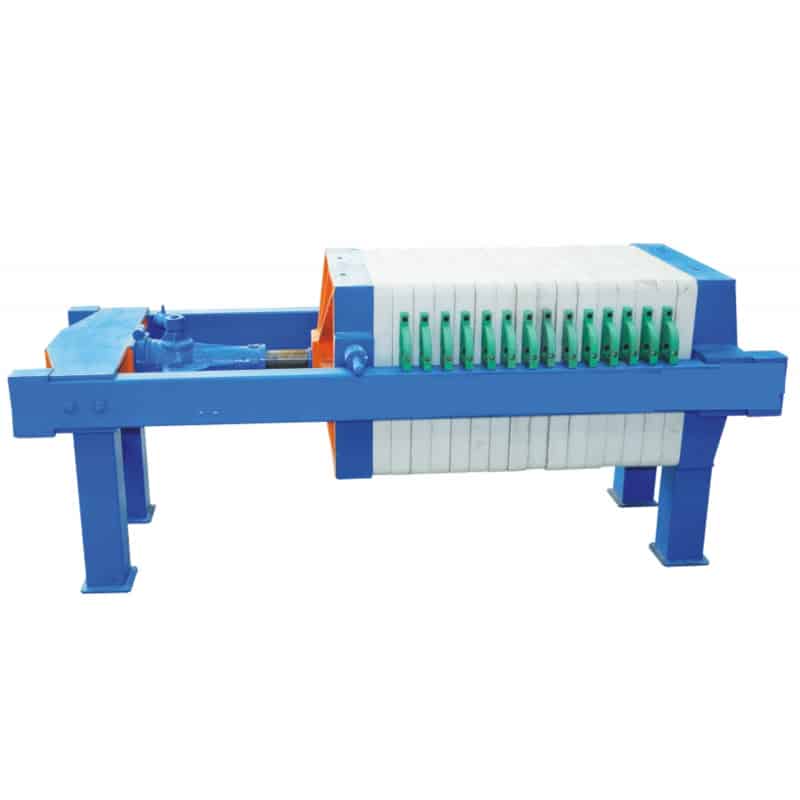
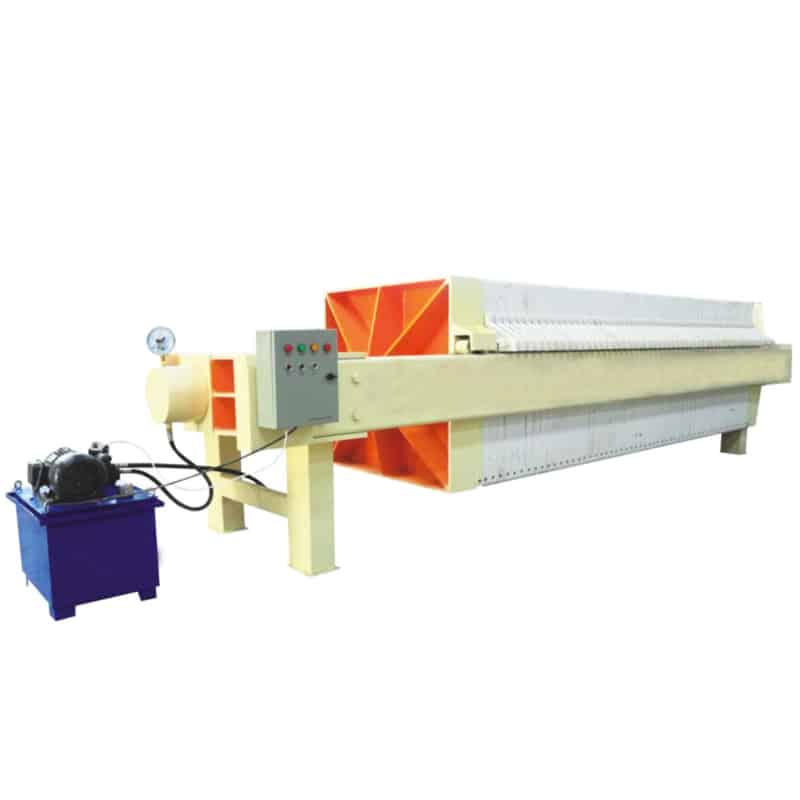
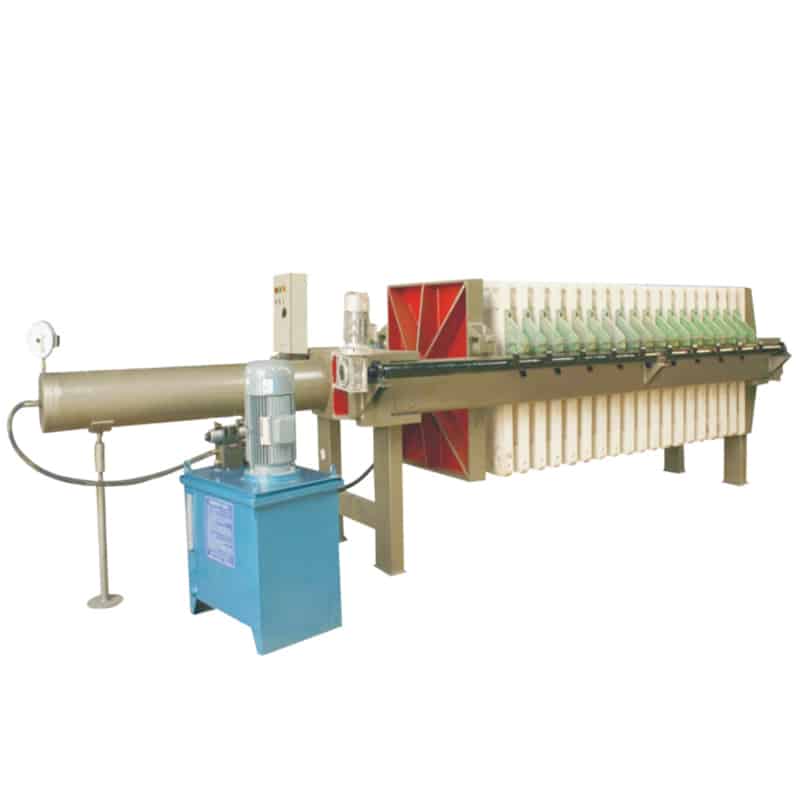
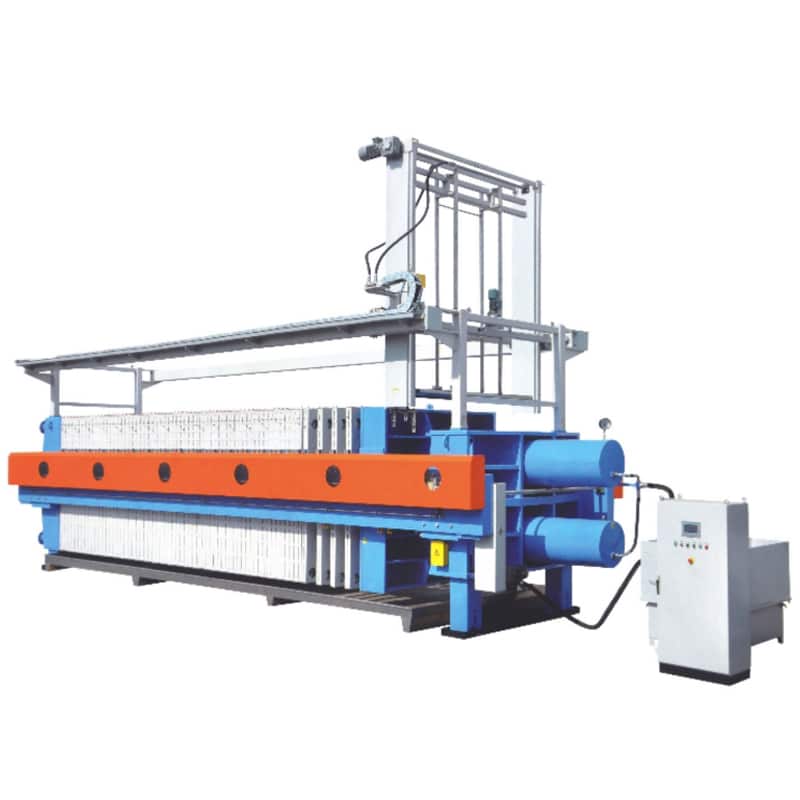
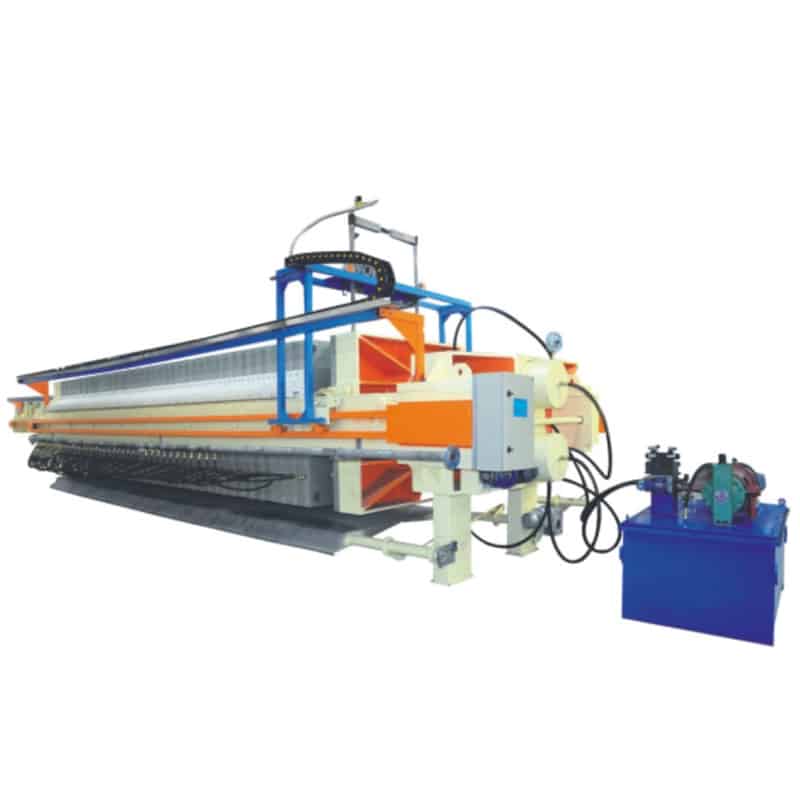
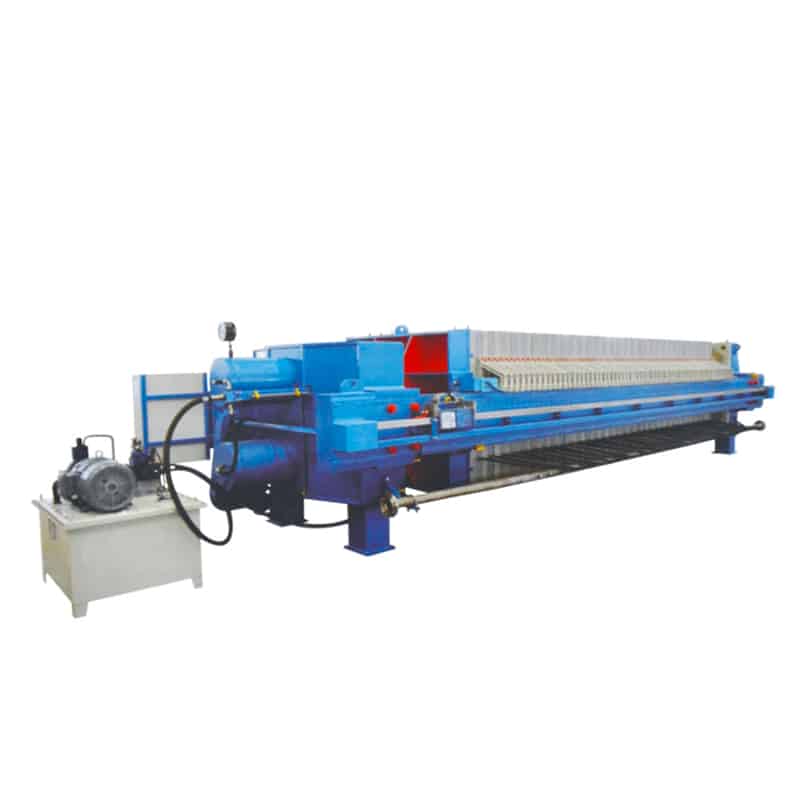

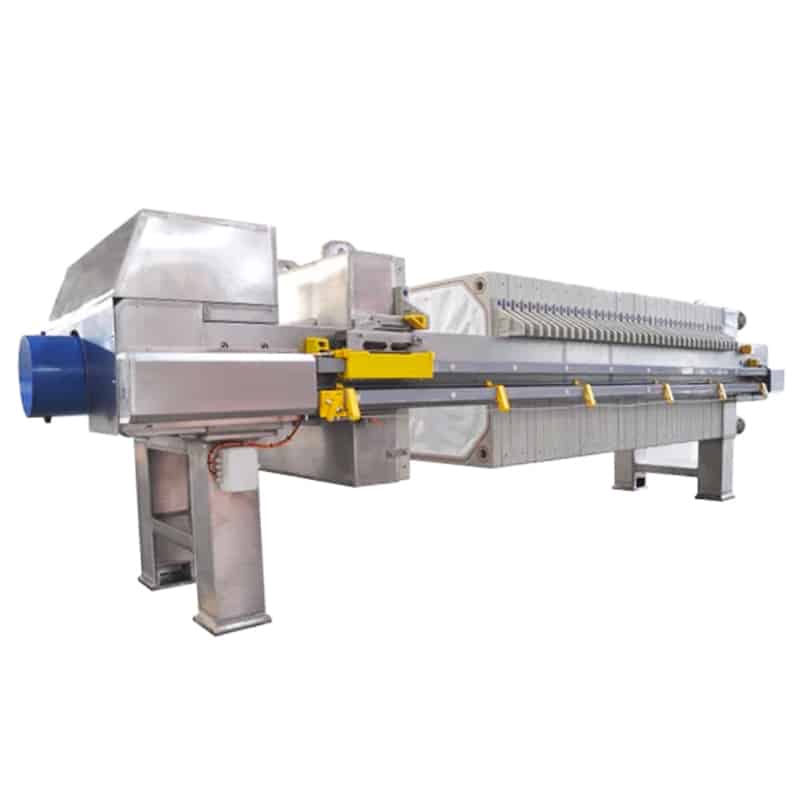
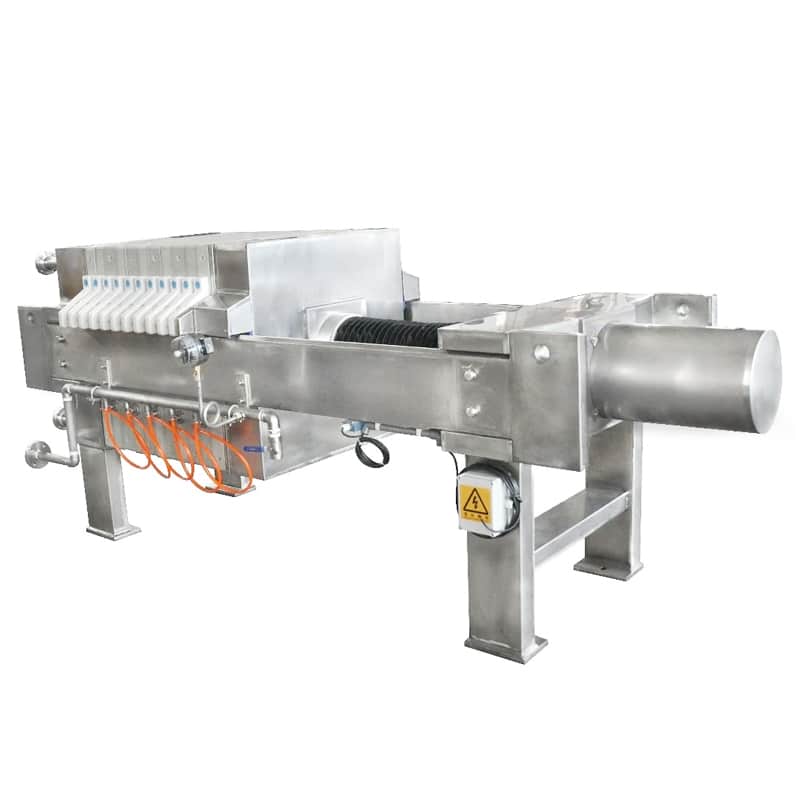
Common failure points of plate and frame filter presses and their solutions
| Fault Point | Possible Cause | Solution |
| Filter Cloth Clogging | Accumulation of filter residues, aging filter cloth | Regularly clean or replace filter cloth |
| Leakage from Filter Plate and Frame | Damaged sealing surfaces of filter plates or frames, aged seals | Replace damaged filter plates, frames, or seals |
| Hydraulic System Oil Leak | Worn hydraulic cylinder or hydraulic lines, damaged seals | Replace worn hydraulic cylinder, hydraulic lines, or seals |
| Pressing Device Malfunction | Worn screw, nut, or jammed hydraulic cylinder | Lubricate or replace worn parts, check hydraulic cylinder |
| Feed Issues | Feed pump malfunction, clogged feed line | Check and repair feed pump, clean feed line |
| Filtered Liquid Discharge Issues | Clogged discharge port or discharge line | Clean discharge port and discharge line |
| Filter Cake Not Forming | Insufficient feed volume, inadequate filtration pressure | Increase feed volume, raise filtration pressure |
| Filter Plate Deformation or Breakage | Excessive filtration pressure, aged filter plate material | Replace deformed or broken filter plates, control filtration pressure |
| Excessive Equipment Vibration | Unstable foundation, improper equipment installation | Reinforce foundation and equipment installation, check equipment balance |
| Control Operation Failure | Control system malfunction, electrical wiring issues | Inspect and repair control system and electrical wiring |
Summary
Plate and frame filter presses are a reliable and efficient solution for solid-liquid separation in a wide range of industries. By understanding how they work and performing proper maintenance, you can ensure optimal performance and long-term stable operation. Regular inspections of key components such as filter cloths, plates, and hydraulic systems are critical to prevent common problems such as clogging, leaks, and operational failures. Adopting a proactive maintenance program will help you maximize the efficiency and durability of your plate and frame filter press, ensuring your production runs smoothly and efficiently.
For comprehensive industrial solutions, choose KUOSI In addition to high-quality filter presses, KUOSI offers a wide range of products including screw presses, sludge dryers, dosing systems, wastewater screens, sludge conveyors, DAF systems, aeration blowers, disinfection systems, sand removal equipment, compactors, scrapers and SBR floating decanters. Choose KUOSI for your industrial needs and experience the difference in quality and service.
